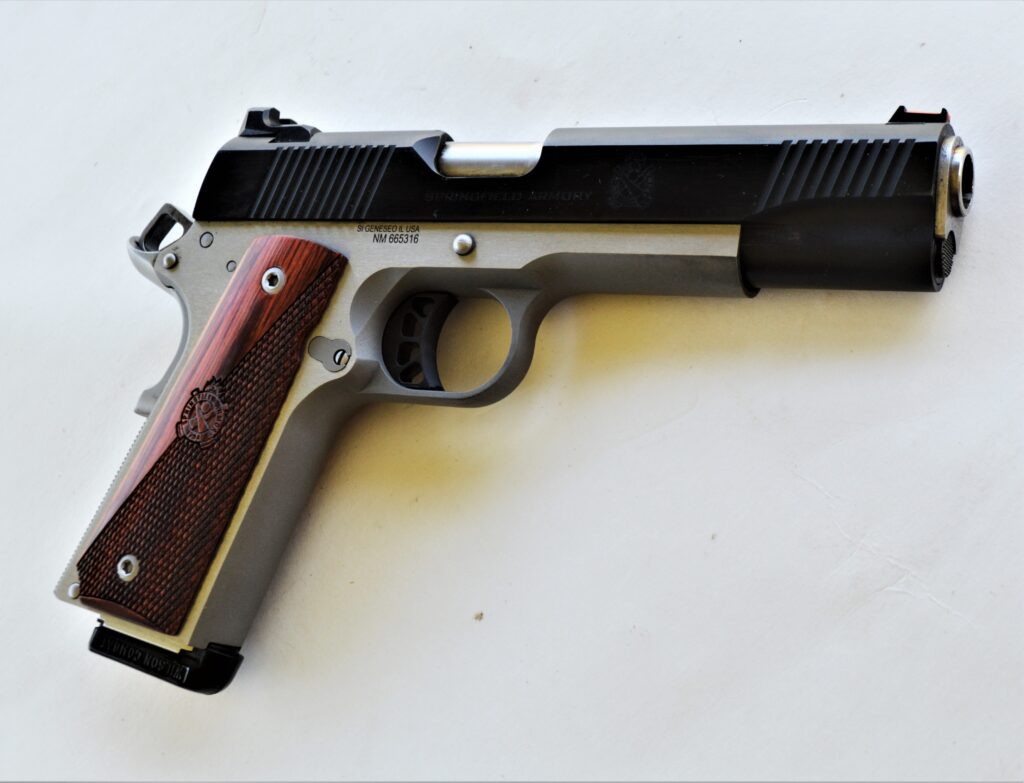
By R.K. Campbell | Contributing Editor
Resources:
Specifications
Model: Ronin Operator
Manufacturer: Springfield Armory
Action: Single action locked breech
Caliber: .45 ACP
Magazine capacity: 7 or 8 round magazines
Sights: Ledge rear, fiber optic front
Overall length: 8.6 in.
Weight: 40 ounces
MSRP: $849
They say chemistry takes time. In my case the first time I held a 1911 it was a bonding experience and good vibes have continued.
The newest 1911 in the safe is a Springfield Ronin Operator. The Operator term is one used by Springfield for a series of capable and reliable 1911 pistols. This pistol is a bit different than many in the price range featuring a forged, not a cast steel frame, and a pleasing two tone treatment. I suppose I am getting a little old as when some call the Ronin a pistol with a retro appearance I don’t see that. It looks like a lot of pistols I have used and use every day. The World War Two GI 1911 now that is retro.
Springfield’s Ronin Operator isn’t a target gun or a range gun but a serious pistol for personal defense. Just as your children always remember you at a certain age and maintain that mental image the handguns you encountered or wished to own at a certain age are the pistols you will enjoy owning. It has the look of a number of handguns I admired and owned a generation ago.
Until the event of the Kimber Custom II, followed by the Springfield Loaded Model, a pistol with a custom beavertail, crisp trigger and good sights was terribly expensive starting at a thousand dollars for just the work and parts. While I have a general fascination with things that go bang I carry and deploy only the best firearms I am able to afford. The Ronin is solidly in those ranks. At less than $850 it gives those on a tight budget not a “good” but an excellent handgun at a fair price.
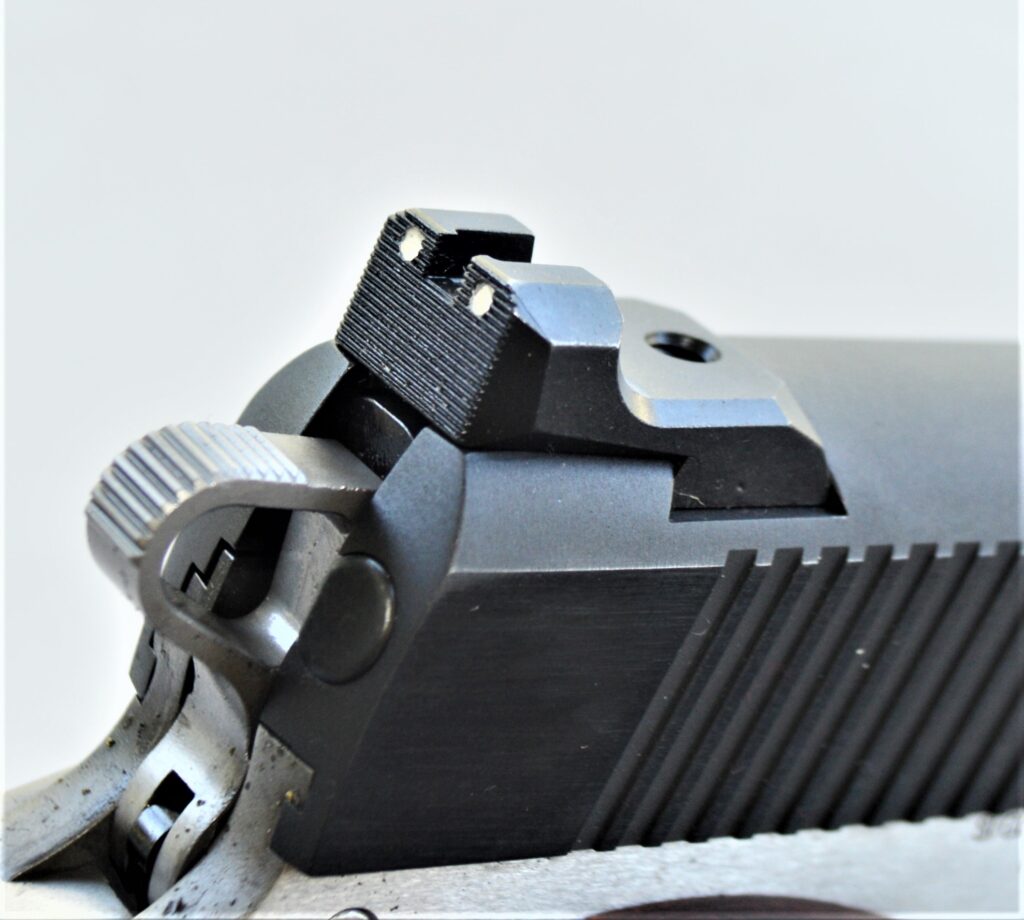
Featuring a full size Government Model 1911 steel frame, this .45 ACP, the Ronin Operator would allow any soldier handling the then-new Government Model .45 in 1912 to pick up the Ronin and go shooting without re-training.
With the many matte blue and cerekoted pistols currently available, it is pleasing to see a handgun with a nice bright blue finish. While I understand the advantages of the 1911 and have written three books on the pistol, I think that a solid selling point is the businesslike even classic appearance. There are few handguns with a nice deep blue finish these days under a thousand dollars.
The finish, roll marks, and flats of the slide are well done, they even impress. The beavertail style grip safety makes for greater surety in fully depressing the grip safety on firing. Some who use the thumbs forward grip may cup the palm and allow it to raise off the grip safety. The memory groove beavertail addresses this concern. The grip safety functions properly by releasing its hold on the trigger about half way into it is travel while the slide lock safety is well fitted with a tight and crisp indent. The trigger action is clean without creep or backlash. Trigger compression is a smooth 4.25 pounds.
The sights are excellent high profile designs, with a fiber optic front sight that is particularly attractive to those like myself that have lost some of their visual acuity. Featuring a serrated surface with two white dots, the rear sight has a wide notch ample for rapid acquisition and the sight is designed to allow one hand racking if needed. I doubt I will need to rack the slide on a belt or boot heel, however, the same movement may be used to release the slide after a tactical reload.
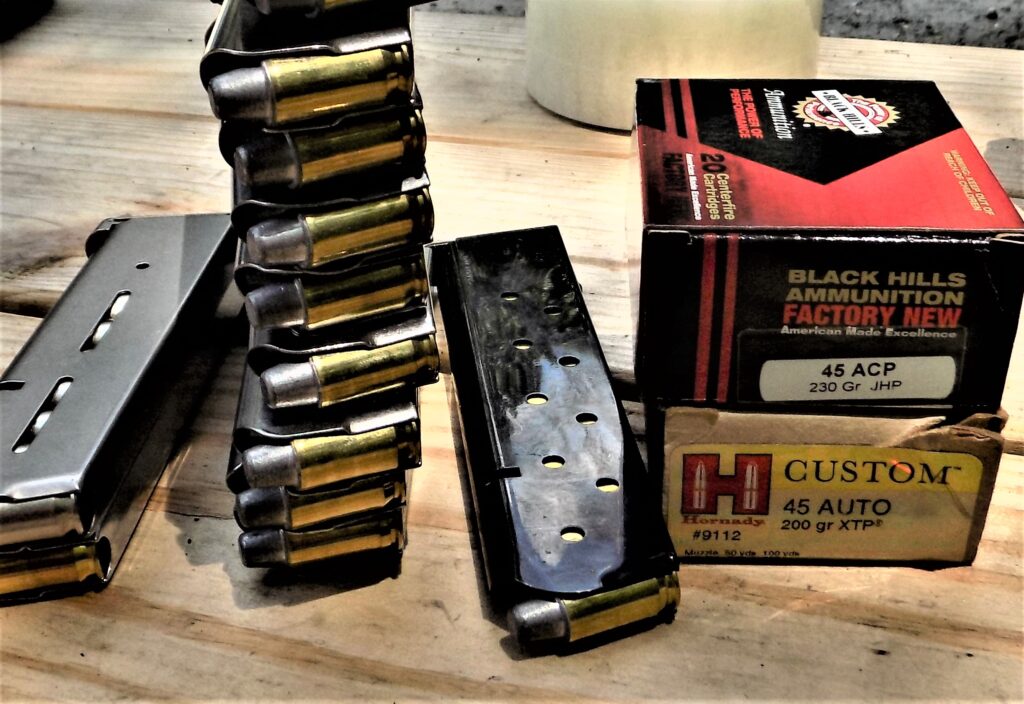
I suggest a purpose designed gun belt if you foresee using the sight as a fulcrum. The fiber optic front sight is fast on target and tracks well as you move between targets. While fiber optics sometimes are rattled out by recoil after tons of use the Springfield Ronin design seems trouble free. A spare fiber optic rod is included. The barrel is well fitted, and exhibits the requisite 1/32 inch gap between the barrel and feed ramps. The slide rolls smoothly over the locking lugs.
The grips are attractive and a bit thinner than most. The average hand size will like these a lot.
If you wish to own a 1911 simply because you appreciate history and have a sense of emotional attachment that is reason enough. If you want a pistol to bet your life on you need a good one. Reliability is one thousand times more important than anything else. I put a severe dent in my supply of .45 ACP ammunition without a single failure to feed, chamber, fire or eject, using a variety of factory loads and handloads. Most of these loads were the standard Black Hills Ammunition including 230-grain FMJ clocking at an average of 820 fps, and Black Hills 200-grain lead SWC loads at 870 fps. I also fired some +P loads as well. The pistol never failed to feed, chamber, fire and eject. It breaks leather quickly as a 1911 should and is fast on target. The trigger action is something I would have paid a lot for a generation ago. It is a nice clean trigger. The .45 kicks but it is a push not a sharp rap and since the slide’s recoil is softened by an efficient recoil spring and the need to cock the hammer during recoil a lot of things are at work to alleviate recoil.
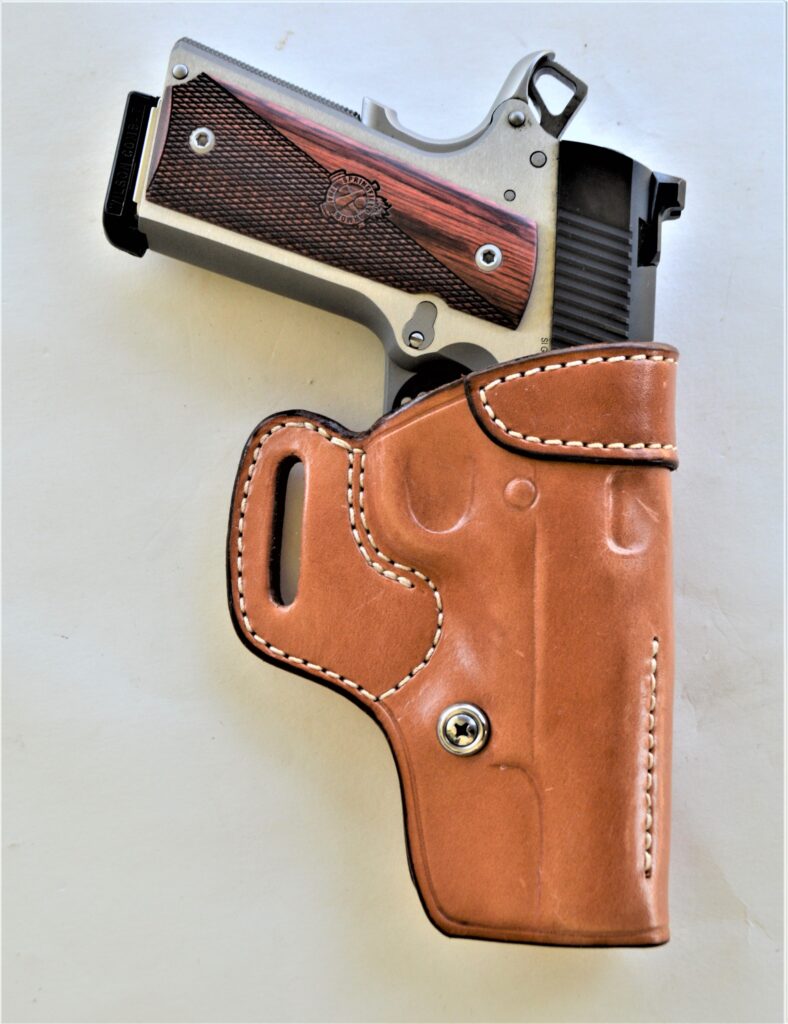
My primary accuracy load was the Black Hills Ammunition 200-grain LSWC, with a modest recoil.
I also proofed the Ronin with the hard hitting Black Hills Ammunition 230 grain JHP. At 860 fps this loading offers an ideal balance of expansion and penetration for personal defense and is among the most accurate factory loads available.
The true test of a handgun is firing at targets at known and unknown ranges including small targets at modest range and larger targets at long range. The Ronin made it easy. As for absolute accuracy I have bench rested the pistol from the Bullshooters gun rest with good results. Using my 230-grain RNL handloads, I put five shots into 1.5 inches at 25 yards. Most groups measured 2.0 inches. The 230-grain ball load isnt as accurate but easily settled into 2.25 inches. The 230-grain JHP put five shots into less than two inches on average. That is plenty accurate for any foreseeable chore. You pay a lot for anything more accurate than that. I also tested the Ronin with the Hornady 200-grain XTP.
Many people feel the 200-grain load makes for a good balance of expansion and penetration with modest recoil. This loading proved remarkably accurate. A handload using the Hornady 185-grain XTP at 1,125 fps also provided good results. Finally, I used a standard +P load featuring the 230-grain Hornady XTP over a stout charge of Unique powder for 920 fps. I use this load sparingly. This is an overlooked combination using the superbly accurate Hornady XTP at enough velocity to lend some truth to the myth of the hard kicking .45!
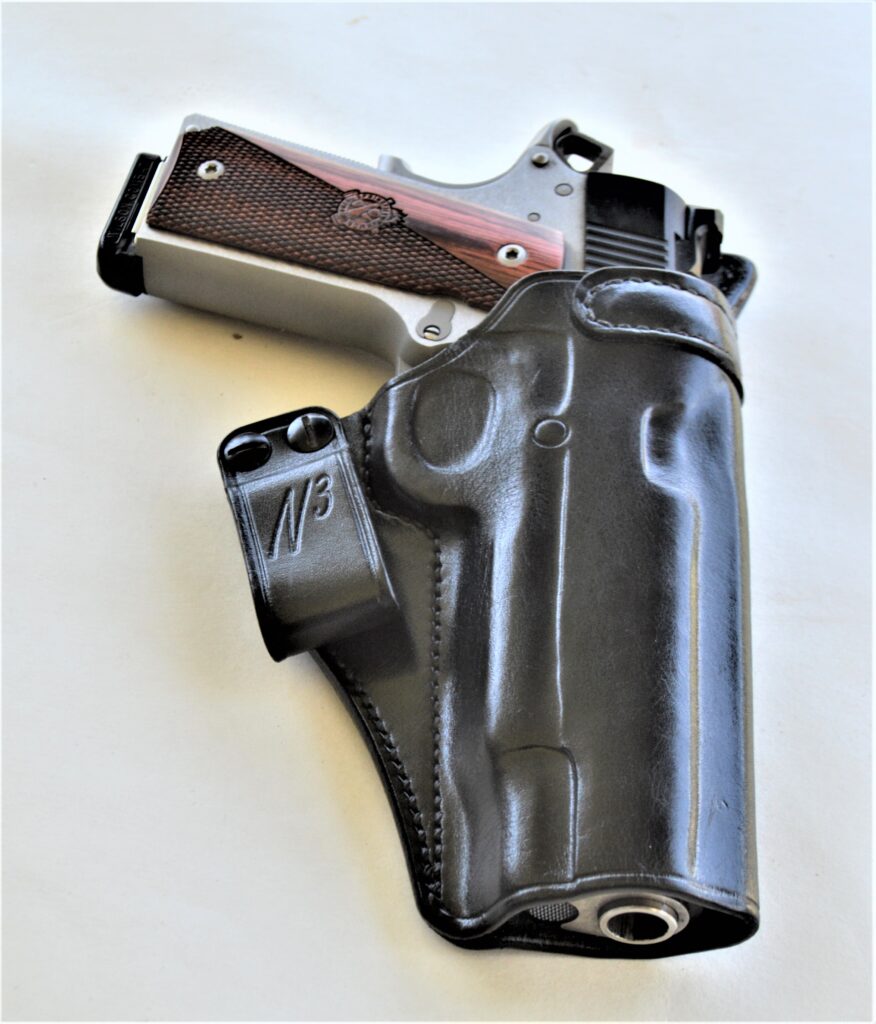
When choosing a holster for a pistol that runs over 40 ounces you need stability. Jeffrey Custom leather offers the Professional, with what is called the Roman Arch feature. The molding is on the front and the rear is nearly flat. It does not collapse after the handgun is drawn and offers an easy re-holster. The interior is pasted, polished, and waxed. I often wear this holster and the Ronin under my concealed carry vest with good results. The forward cant offers real speed.
For concealed carry under a pulled out shirt an inside the waistband holster is needed. The handgun is buried in the pants and much easier to conceal. The holster must be well-designed. I also like the Galco N3 in this role. A real belt loop pulls the holster in tight and the N3 features a sweat guard to protect the body from the gun’s edges and the gun from perspiration. These holsters serve my needs year round. The Ronin is a credible defense handgun- one of the best available. It will complement the skills of a trained user.



